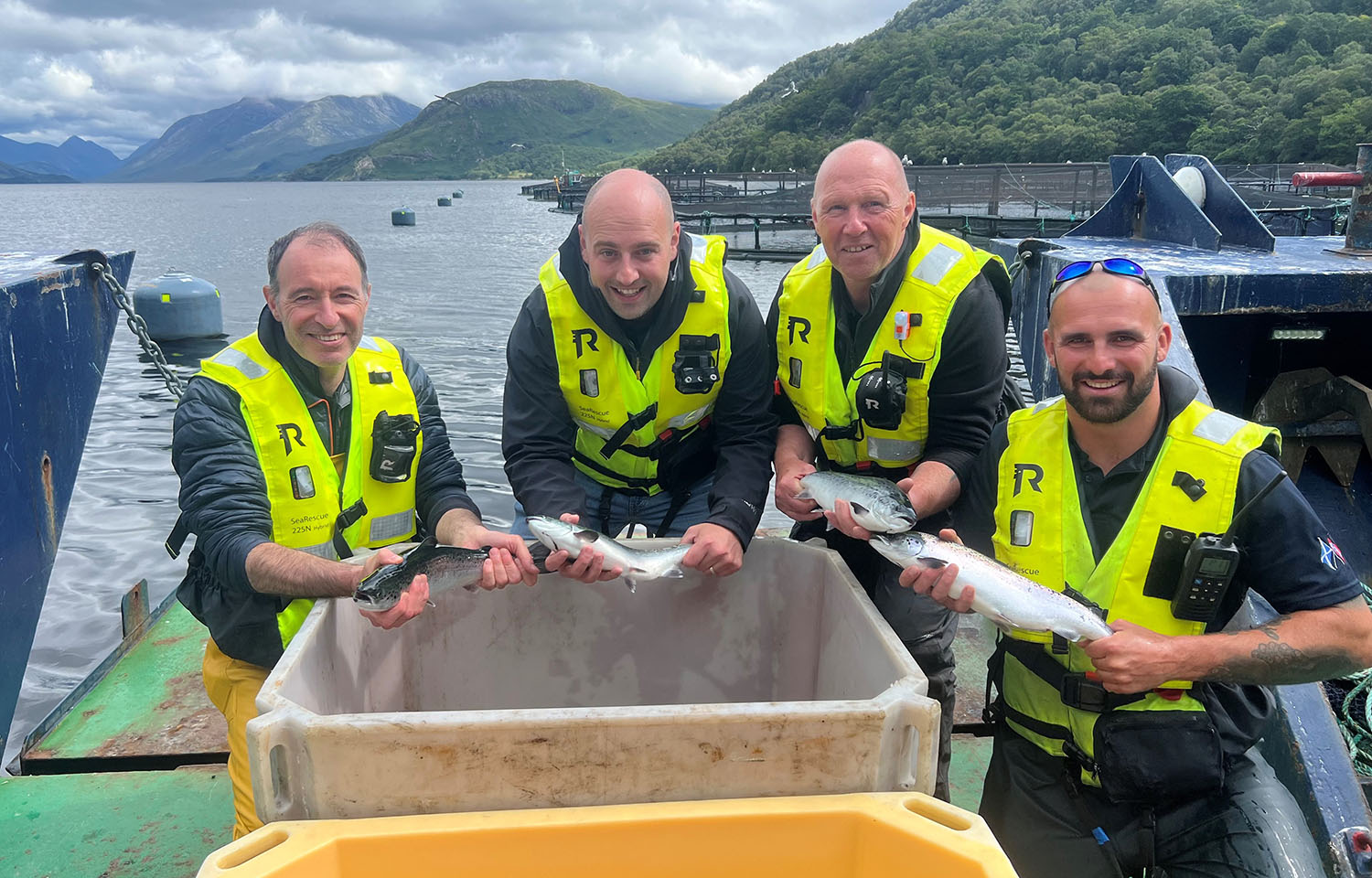Mowi Scotland said it has pioneered a new method of sea lice modeling as part of an application to grow post-smolt salmon at a farm in Loch Etive, Scotland, claiming the new model should help reduce sea lice.
The company said that its new sea lice modeling, developed by Mowi Head of Oceanography and Environmental Modeling Philip Gillibrand, created a sea lice distribution model for Loch Etive. Using the model, the company developed a farming strategy it said is predicted to vastly reduce the prevalence of sea lice.
The company said Gillibrand and MowI COO of Farming Scotland, Ireland, Faroes, and Atlantic Canada Ben Hadfield recently visited the Loch Etive site to validate the model and that model has so far shown high accuracy; however, it also said it overpredicted sea lice levels in the first five months of stocking.
“We used a sea lice dispersal model to establish the connectivity between our farm sites in Loch Etive and neighboring sites and then combined that with a population dynamics model to predict the life cycle of the lice on the farms and estimate the daily production of lice larvae,” Gillibrand said. “Both models include a degree of precaution, and the lice count data we are collecting will help fine-tune the models and improve the predictions in the future.”
Mowi said that sea lice modeling is a core part of salmon-farming regulations in Scotland, in part thanks to the salmon industry suggesting the practice as a way of improving the relationship between the salmon-farming industry and wild fish interest groups.
The Loch Etive site was first approved in late 2023, and in February 2024, the company deployed 2.5 million post-smolt salmon which will later be used to stock the company’s larger sites in Scotland. According to Hadfield, the initial analysis showed the sea lice modeling is working at the site.
“The post-smolt salmon looked excellent: perfect form, healthy gills, and low sea lice levels,” he said. “Our model has a strong correlation to lice epidemiology but still overpredicts to a reasonable level, due to the precautionary assumptions in line with the disciplines expected in environmental modeling such as the fact that we are not able to model the full extent of our farmed cleaner fish removing sea lice from our salmon.”
The latest model also comes amid increasing pressure from environmental NGOs opposed to salmon farming, Hadfield said. He was critical of recent lice distribution models presented by Wild Fish, the Coastal Communities Network (CCN), and Fisheries Management Scotland to the Scottish Parliament.
“I was disappointed to see Wild Fish and CCN state that sea lice levels were high and uncontrolled when the data shows they are at the lowest level for 20 years,” Hadfield said. “I believe that this recent evidence was at best misleading and given with the express intent of damaging the salmon farming industry. Indeed, this was duly refuted by Charles Allan, the most senior operational regulator at the Scottish Government, who gave evidence to the Parliamentary Committee that sea lice were under control and at low levels.”
Mowi announced the success with its new modeling as a recently published study that reviewed data from the Norwegian salmon-farming industry found that the production of sea lice larvae from farmed salmon is overestimated and that the impacts on wild salmon from farmed salmon are minimal.








